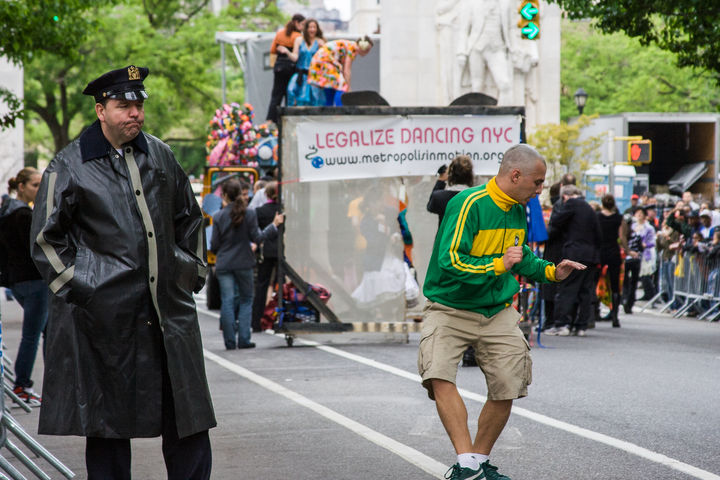Dance Parade 2007
New York, USA
When former mayor (and current presidential hopeful) Rudy Giuliani stepped up enforcement of New York's “cabaret laws” as part of a ‘quality of life’ campaign, the irony was not lost on those New Yorkers who like to dance. Under the laws, any establishment that serves food and drink must have a license if the owners want to allow dancing on the premises. Such licenses are not easy to come by, and only about 5% of New York's licensed premises have one. In the other 95%, getting up and dancing is strictly verboten. Even music venues will hasten to quell any outbreak of spontaneous dancing, so that the unseemly public spectacle of gyrating adults doesn't get them fined or lose them their liquor license.
Unsurprisingly, a lot of people are unhappy with this state of affairs. Many of them were out on Saturday morning, shaking and twirling their way down Fifth Avenue in protest. There were breakdancers and swing dancers, samba, salsa and tango, dancers from Cameroon and Colombia, dancers on roller skates and even dancers in wheelchairs. There was a tall man in the white robes of a mevlevi dervish, two stiltwalkers in police uniforms, a samba queen in a sequined bikini and unruly white feathers. They danced in street clothes, in tracksuits printed with the name of their dance studio, in elaborate costumes with ruffles and feathers in all colors, and in some cases in outfits that didn't look nearly warm enough for a rather raw May morning.
I am not a dancer. I dance only under extreme duress, something that anyone who has ever seen me try to dance will understand. This means that I don't resent New York's archaic laws as viscerally as, say, M., or the protesters in today's parade. Still, it does seem more than a little absurd that in a city as modern and cosmopolitan as New York, dancing should still be subject to such draconian regulation. That it should be done in the name of ‘quality of life’ just adds irony to the injury.
